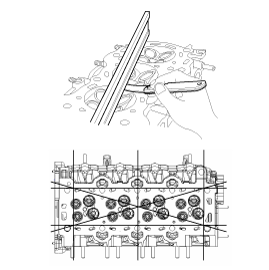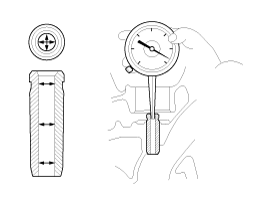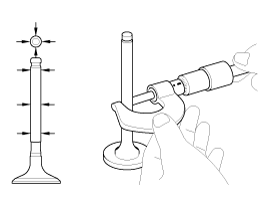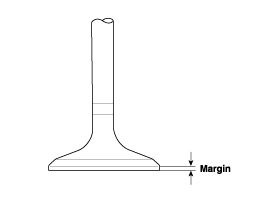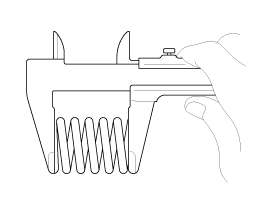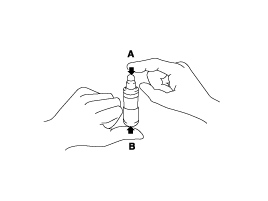Inspect for flatness.
Using a precision straight edge and feeler gauge, measure the surface the contacting the cylinder block and the manifolds for warpage.
Flatness of cylinder head gasket surface :
Less than 0.05 mm (0.0020 in) for all
Less than 0.03 mm (0.0012 in) for each cylinder
Less than 0.012 mm (0.00047 in) for 50 mm (1.9685 in.) x 50 mm (1.9685 in.)
Flatness of manifold mating surface :
Less than 0.025 mm (0.0010 in) for width
Less than 0.160 mm (0.0063 in) for length
Less than 0.013 mm (0.00051 in) for 50 mm (1.9685 in.) x 50 mm (1.9685 in.)
